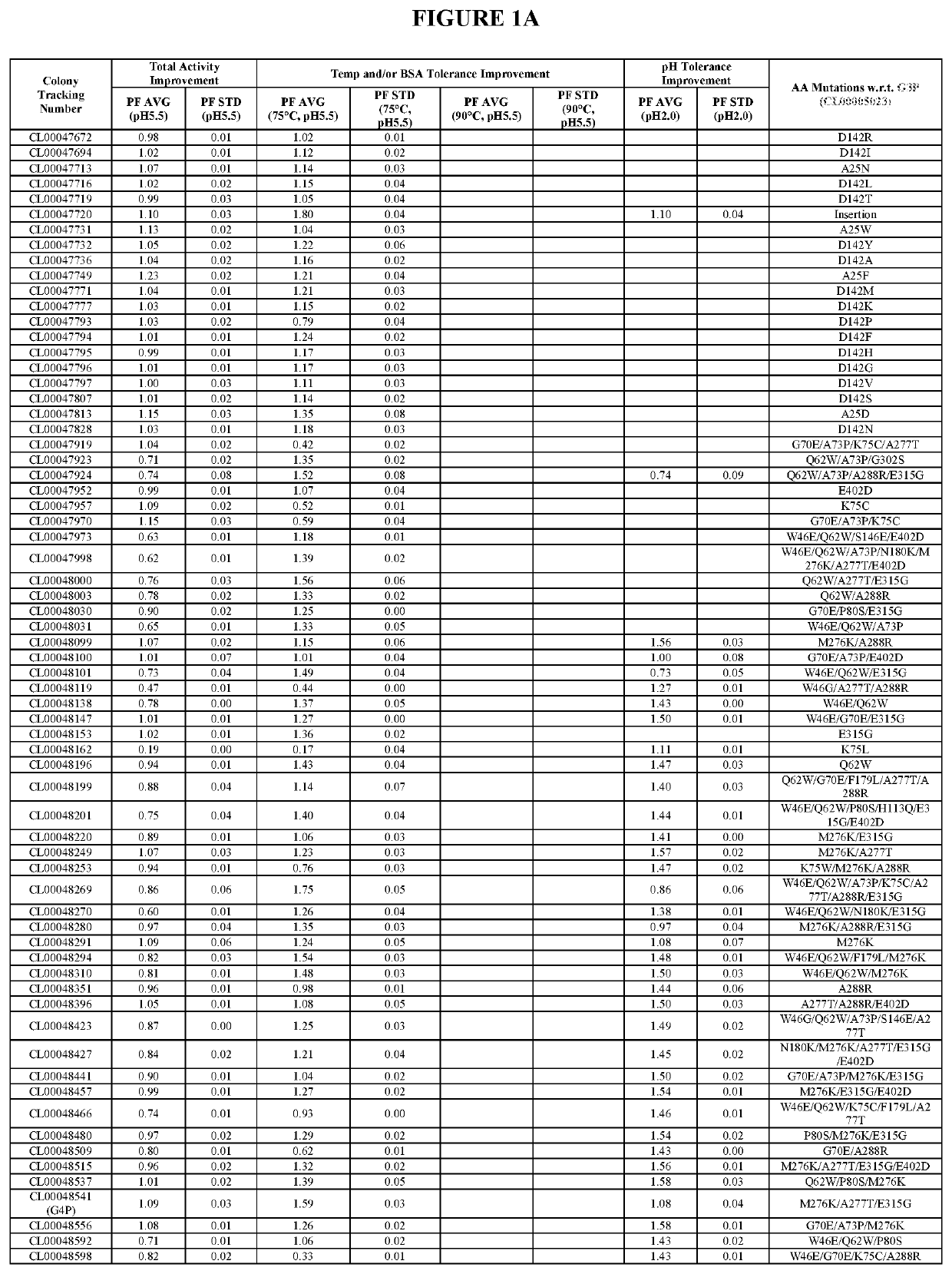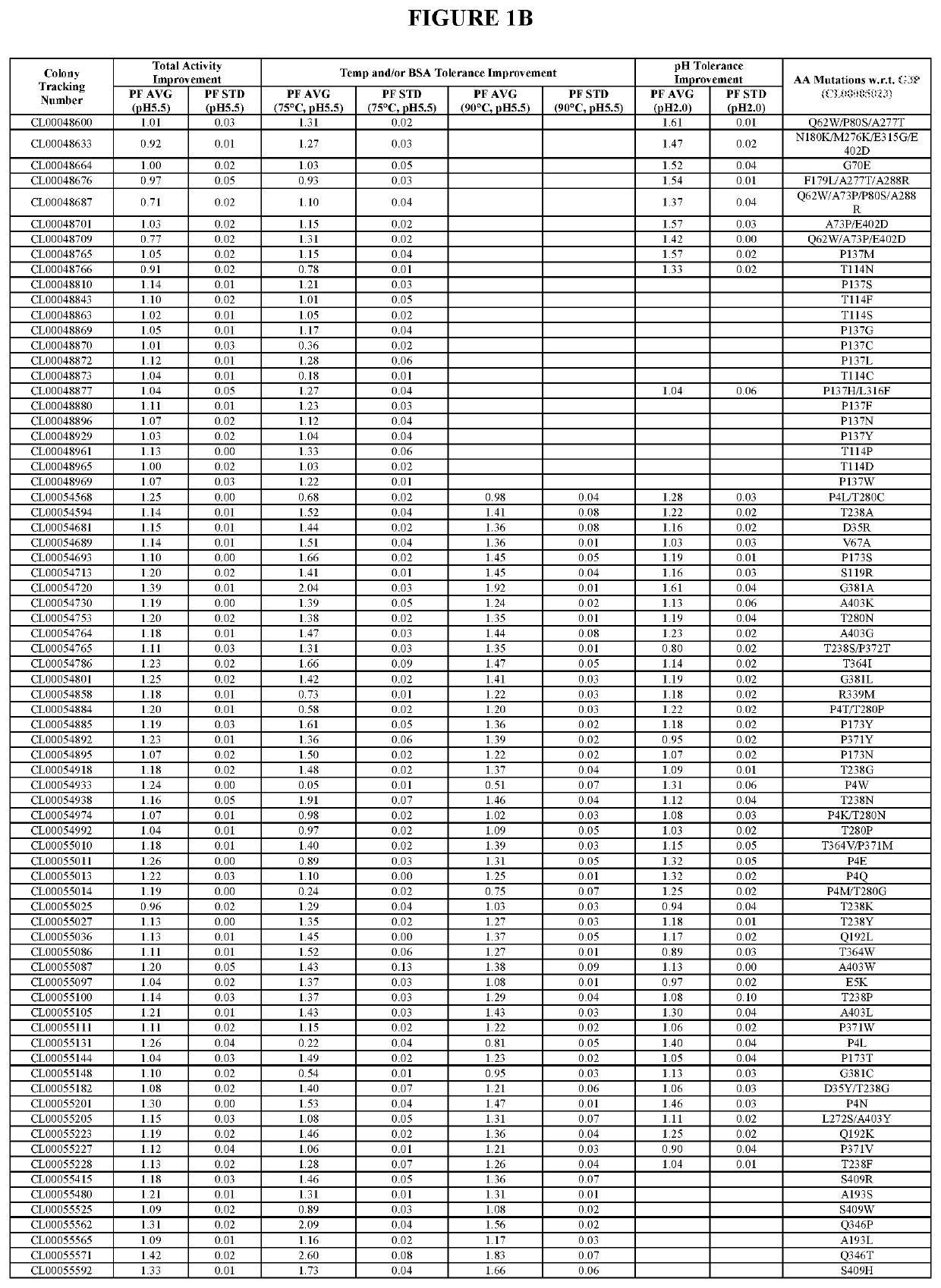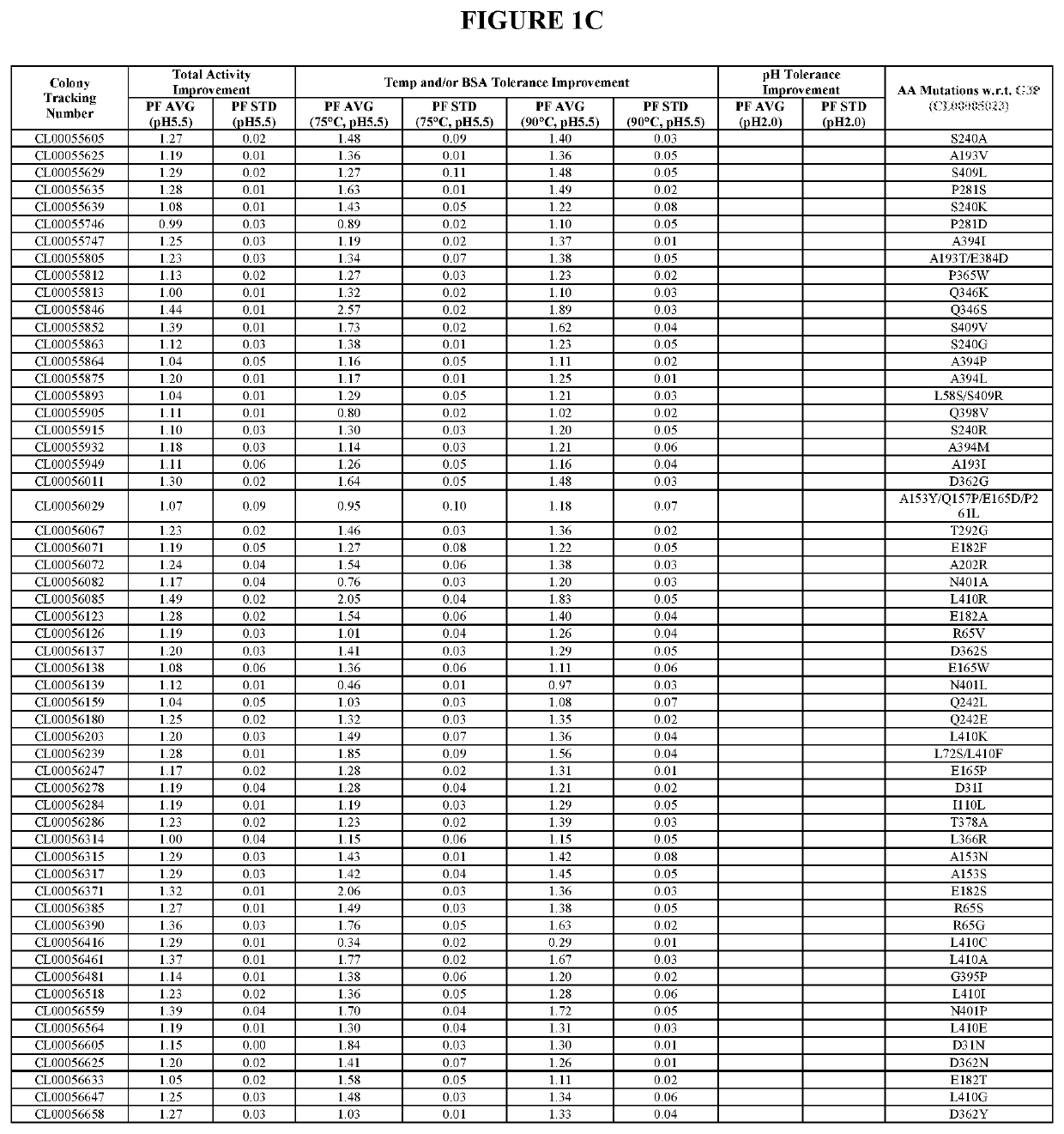Additional phytase variants and methods
a technology of phytase and variants, applied in the field of additional phytase variants and methods, can solve the problems of reducing the accessibility of proteases, inefficient protein digestion, and incurring heavy costs for the feed industry, so as to improve the release and/or degradation of phytate, improve the stability of protease, and improve the performance of animal feed
- Summary
- Abstract
- Description
- Claims
- Application Information
AI Technical Summary
Benefits of technology
Problems solved by technology
Method used
Image
Examples
examples
X. Example 1: Phytase G3, G4, G5 and G6 Mutant Colletion Design and Construction
[0531]The starting enzyme of the present invention is the G3P mature protein (SEQ ID NO:1), which is the “G3P” of the U.S. Patent Application Publication US 2018 / 0002680 A1, U.S. Pat. Nos. 9,528,096 B1 and 9,605,245 B1, hereby incorporated by reference in its entirety (G3P comprises amino acid substitutions I55V / H60Q / D69N / K74D / S120R / N137P / G157Q / R159Y / Y255D / F354Y / A380P relative to the wild type phytase sequence as set forth in SEQ ID NO:17 of the present invention). To improve the oveall activity and stability of G3P against high temperature, BSA and acid, six, eight, six and nine mutant collections were designed during G3, G4, G5 and G6 improvements respectively based on analyzing sequence, structural and experimental data. The design includes one to multiple specific mutations per mutant. The mutant collections were subsequently constructed using standard site-directed mutagenesis methods and subsequent...
example 6
XV. Design and Construction of Phytase Variants
[0540]Eight variants, including G6P, were designed based on the beneficial variants identified in Saccharomyces cerevisiae, as well as structure and sequence analysis to improve the total activity and stability against high temperature, BSA and low pH. The variants were subsequently constructed using gene specific primers with 5′Xho1 and 3′Not 1 cloning site. Following PCR and restriction digestion, it was cloned into pPiCZαA vector (EasySelect Pichia Expression Kit, Invitrogen by life technologies). The recombinant plasmid was linearized using Pme1 restriction enzyme and was transformed into X33 Pichia strain from the same expression kit mentioned earlier. The transformants were then selected on YPD+Zeocin agar plates after 3 days of growth at 30° C.
XVI. Example 7: Preparation of Phytase Variants Produced by Pichia pastoris in HTP
[0541]Phytase-encoding genes from single colonies were inoculated into individual wells of 24 well plates ...
PUM
| Property | Measurement | Unit |
|---|---|---|
| temperature | aaaaa | aaaaa |
| temperature | aaaaa | aaaaa |
| pH | aaaaa | aaaaa |
Abstract
Description
Claims
Application Information
 Login to View More
Login to View More - R&D
- Intellectual Property
- Life Sciences
- Materials
- Tech Scout
- Unparalleled Data Quality
- Higher Quality Content
- 60% Fewer Hallucinations
Browse by: Latest US Patents, China's latest patents, Technical Efficacy Thesaurus, Application Domain, Technology Topic, Popular Technical Reports.
© 2025 PatSnap. All rights reserved.Legal|Privacy policy|Modern Slavery Act Transparency Statement|Sitemap|About US| Contact US: help@patsnap.com



